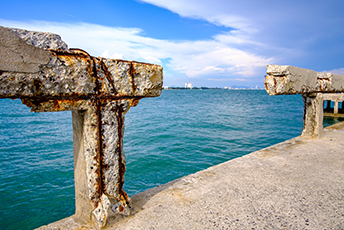Bimetallic corrosion risks from contact with galvanised steel or aluminium
This resource explains the causes of bimetallic corrosion in stainless steel which occurs when two dissimilar metals are in 'electrical' contact and are bridged by an electrically conductive liquid. The corrosion risks of metals often found in contact, such as stainless steel touching galvanised steel or aluminium, are considered for locations of various levels of corrosion. The discolouration (staining) effects on metals in contact are also discussed.
Provider: British Stainless Steel Association
See this resource


